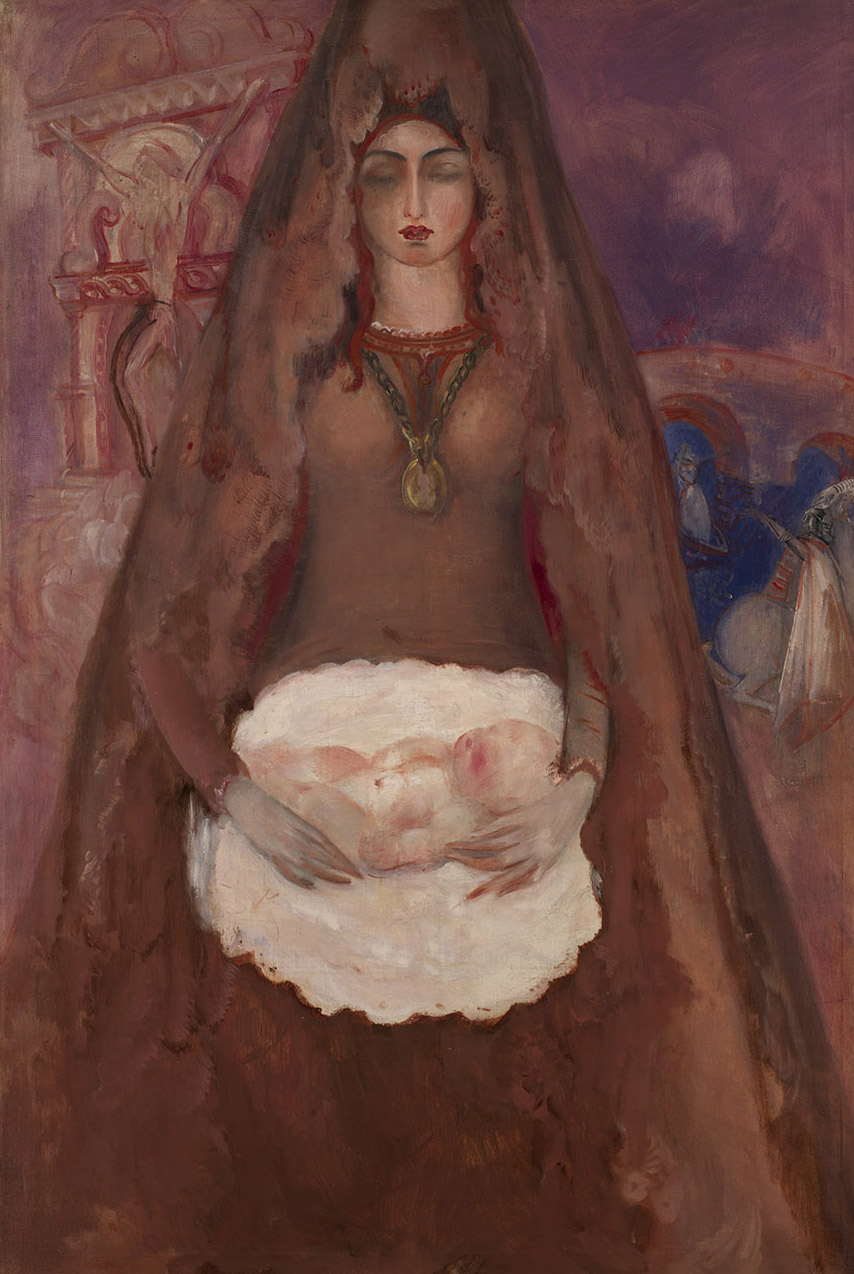MacDougall Auctions 12-18 June 2008
12 June 2008

* 33. ANISFELD, BORIS 1879-1973
Spanish Madonna
Oil on canvas, 153 by 104 cm.
30,000-50,000
Provenance: Estate of the artist.
In the summer of 1913, the last before the outbreak of war, Anisfeld left his family in the French resort town of Hendaye, and crossed into Spain at Irun. He spent most of the next few months travelling by rail all over the country, spending time in Madrid, where he pored over the works of the Spanish masters in the Prado, explored nearby Toledo, the home of his favourite Spanish painter, El Greco, before spending a month in Seville.
When he rejoined his family in Hendaye at the end of the summer, he had stored up enough Spanish inspiration to last him a lifetime.
His huge painting Hispania, now at the Smithsonian, was begun soon after the family returned to St. Petersburg, and was worked on up until they left for New York in 1917. He completed paintings of bullrings and Spanish towns and churches during the war years, and long after his travels around Spain, he continued to turn out sketches, water colours, and paintings on Spanish themes.
Spanish Madonna, painted while Anisfeld was teaching at the Art Institute of Chicago, shows the recollections of his Spanish trip were still strong. It is self-referential to a certain extent: the church interior with crucifix, and the Romanesque bridge in the right background occur in other, earlier paintings, notably Hispania. The subject itself runs constantly through Anisfeld’s work. There are icon-like Russian Madonnas, Indian Madonnas, and many pictures of women and infants without any kind of religious imagery.
Anisfeld’s approach to religion was eclectic. He drew inspiration from all religions, but he did not subscribe to any form of organised practice. His use of religious iconography, as in this work, was intended to illustrate his understanding of a universal life-force, which pre-dated modern religions, and is he basis of his, if you will, personal religious practice, his art.
Charles Chatfield-Taylor.
Notes on symbols:
* Indicates 5% Import Duty Charge applies.
Ω Indicates 20% Import Duty Charge applies.
§ Indicates Artist's Resale Right applies.
† Indicates Standard VAT scheme applies, and the rate of 20% VAT will be charged on both hammer price and premium.